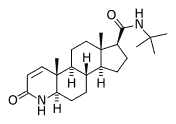ONCOLOGY
* Finasteride and Prostate Cancer Thompson IM, Goodman PJ, Tangen CM, et al: The influence of finasteride on the development of prostate cancer: N Engl J Med 2003;349(3):215-24.
Scardino PT: The prevention of prostate cancer-the dilemma continues. N Engl J Med 2003;349(3):297-299 (editorial).
The results of the first major trial of chemoprevention for prostate cancer do not provide clear answers for clinicians. In the trial, 18,882 men 55 years of age or older who had a normal digital rectal examination and a prostate-specific antigen (PSA) level of 3.0 ng/ml or lower were assigned to treatment with finasteride (5 mg daily) or placebo for 7 years. Prostate biopsies were advised for abnormal digital rectal examination or for PSA of 4.0 or greater.
To achieve a similar biopsy rate in both groups, low PSA values from the finasteride group were corrected by multiplying by 2.4. Prostate cancer was found in 18.4% of the finasteride group and in 24.4% of the placebo group, for a 25% reduction in prevalence over the 7 year period (95% CI 18.6-30.6%;p
It is not known whether finasteride enables the development of more aggressive cancers or whether PSA suppression by finasteride led to delays in biopsy. Urinary symptoms occurred more often in men who received placebo while sexual side effects were significantly more frequent in the study group. Although finasteride prevents or delays the appearance of prostate cancer, the tumors when found are higher grade. It is probably not necessary to stop finasteride in those currently taking it, but clinicians should carefully monitor these patients for prostate cancer.
Copyright Springhouse Corporation Nov 2003
Provided by ProQuest Information and Learning Company. All rights Reserved



